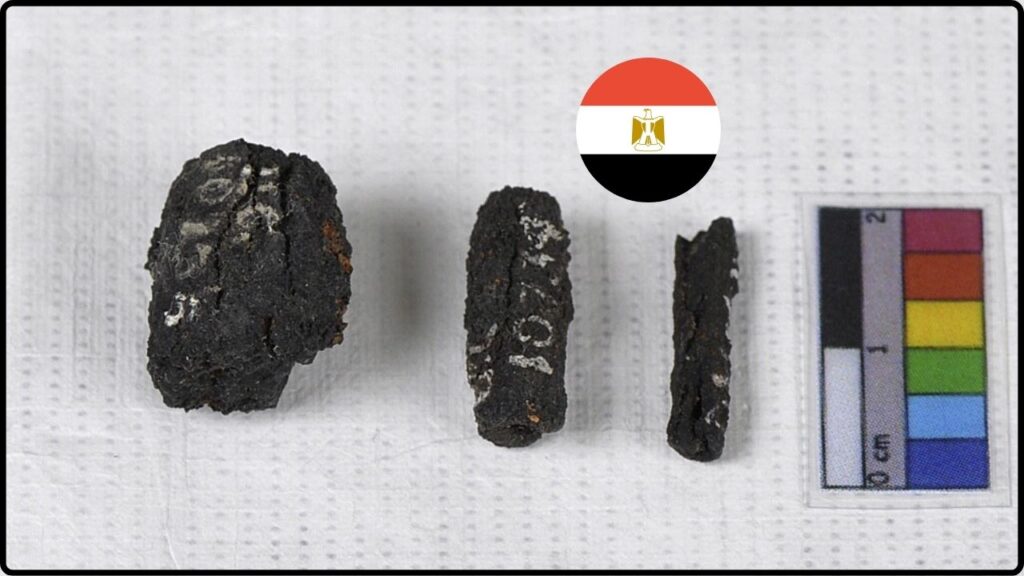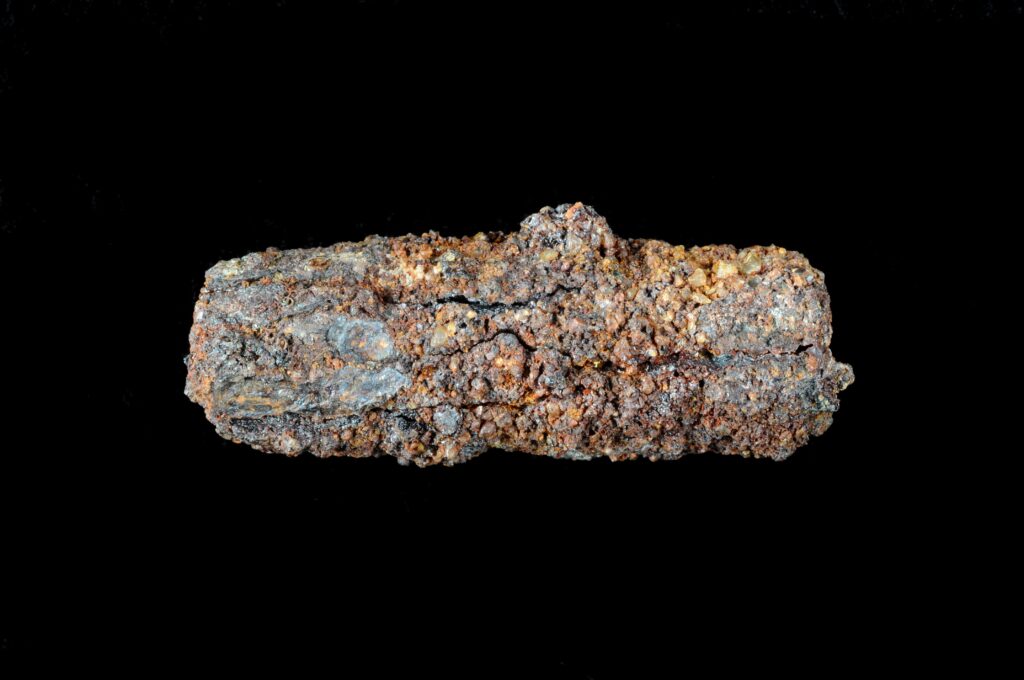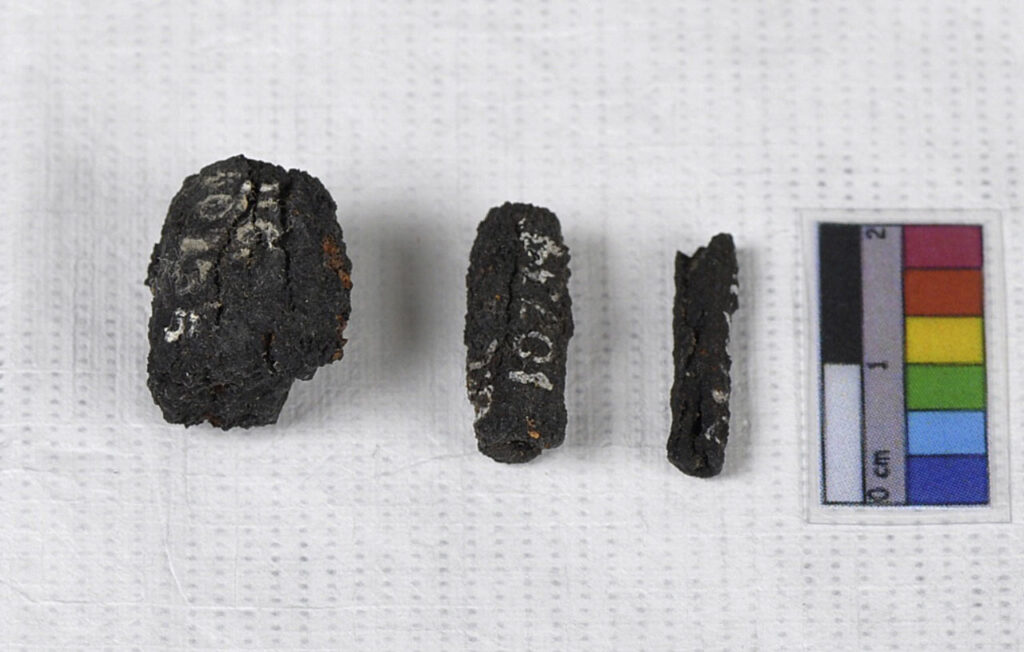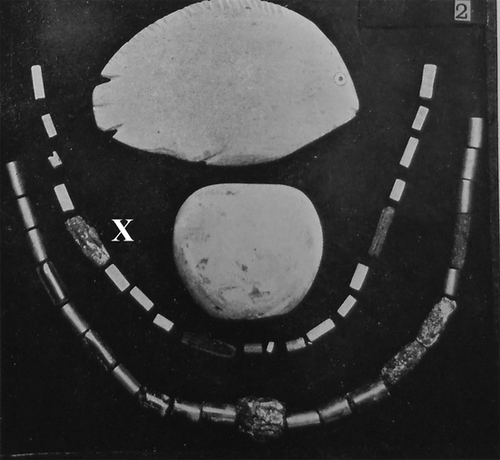
5,000-Year-Old Meteorite Beads Found in Egypt: 5,000-Year-Old Meteorite Beads Found in Egypt—Could This Be the Birth of Human Metalwork? That question isn’t just a curiosity—it’s potentially one of the biggest revelations in the history of metallurgy. Imagine turning literal pieces of space into jewelry, thousands of years before the Iron Age. That’s exactly what ancient Egyptians were doing more than 5,000 years ago.
These mysterious iron beads were found in graves at a prehistoric Egyptian site called Gerzeh, and their story has only gotten more fascinating as science has advanced. New research using high-tech tools has revealed that these aren’t ordinary beads—they’re made from meteorite iron. That means the metal came from space, not Earth, and was shaped by human hands long before traditional smelting even existed. In this article, we’ll break down this incredible discovery in simple, engaging language anyone can understand—while offering deeper insights professionals will appreciate. Whether you’re a middle-schooler fascinated by ancient history or a researcher looking into early metallurgy, this is for you.
5,000-Year-Old Meteorite Beads Found in Egypt
The 5,000-year-old meteorite beads found in Egypt aren’t just ancient accessories—they’re profound pieces of human history. They prove that long before industrial tools and scientific theories, people were already exploring, experimenting, and expressing through the materials they found. These beads show that the birth of metallurgy didn’t happen all at once. It began with curiosity, with a fallen star, and with the hands of a prehistoric artisan who saw not just metal—but meaning. In their cold-hammered gleam, we see the first sparks of technology and the earliest echoes of the human desire to transform the world around us—even if that world comes from the stars.
| Topic | Details |
|---|---|
| What was found | Beads made from meteorite iron |
| Location | Gerzeh cemetery, Egypt (about 40 miles south of Cairo) |
| Estimated age | ~3200 BCE (over 5,000 years ago) |
| Metal content | High in nickel (25–30%), cobalt, and germanium |
| Scientific confirmation | X-ray fluorescence, neutron imaging, and microscopy |
| Method of crafting | Cold hammering; no smelting involved |
| Cultural significance | Grave goods with gold and carnelian beads |
| Impact | Oldest known worked iron objects |
| Read more | Smithsonian Magazine article |
What Are Meteorite Beads?
Back in 1911, British archaeologists excavating a cemetery in Gerzeh discovered nine small, tube-shaped iron beads. At first, nobody thought much of them. Iron tools were rare in prehistoric Egypt, but the assumption was they were just early examples of Earth-mined iron.
But something didn’t quite add up.
Iron smelting wasn’t known to exist in Egypt until almost 2,000 years later. So how did people in 3200 BCE shape iron? That question sat unanswered for decades—until modern scientists decided to investigate using new techniques.
The Science Behind the Discovery of 5,000-Year-Old Meteorite Beads Found in Egypt
Thanks to advances in imaging and analysis, researchers from University College London and the Open University examined the beads using:
- X-ray fluorescence (XRF) – to identify the metal composition.
- Neutron radiography – to see internal structures without damaging the object.
- Electron microscopy – to analyze the grain patterns in the metal.
What they found was astonishing.
The beads were high in nickel (25–30%), along with cobalt and germanium—a chemical fingerprint consistent with iron meteorites. Even more compelling was the presence of Widmanstätten patterns, which only form in iron that cools very slowly over millions of years in space. That confirmed it: these beads were crafted from a meteorite that fell to Earth, not from any Earth-mined iron source.

How Were the Beads Made?
The beads weren’t cast or melted. Instead, they were cold hammered—a metalworking technique that involves pounding and shaping solid metal rather than melting it.
Using basic stone tools, ancient artisans flattened pieces of meteorite iron into thin sheets. Then, they rolled those sheets into tubes and strung them like beads.
Think about that: no forge, no furnace, just skill and creativity. This technique requires immense patience and precision, especially with a metal as tough and brittle as meteorite iron.
Cultural Significance: More Than Just Jewelry
These beads weren’t buried with just anyone. They were found alongside gold and carnelian, a deep red semi-precious stone, in elite burials. This tells us the beads weren’t utilitarian—they were ceremonial or symbolic.
In ancient cultures, iron from the sky was considered sacred. It likely represented divine power, cosmic connection, or heavenly origin. The Egyptians even had a term for it: “iron of the sky.”
Wearing or being buried with meteorite iron wasn’t about utility—it was about identity, status, and belief. These were cosmic relics, worn as expressions of power and reverence.
Early Human Ingenuity on Display
This discovery forces us to rethink the conventional timeline of human technology. The Iron Age is generally said to begin around 1200 BCE, when societies started smelting iron from ore. But here we see evidence that people were already working with iron 2,000 years earlier.
This isn’t just about a piece of jewelry—it’s about how humans observed, experimented, and innovated with new materials.
Here’s what it tells us:
- Ancient humans could identify unusual materials (iron meteorites).
- They learned how to shape a very hard metal without melting it.
- They associated this material with cultural and spiritual meaning.
All of this happened without writing, metallurgy, or advanced tools. Just keen observation, creativity, and cultural imagination.

Meteorite Use Around the Ancient World
Egypt wasn’t the only culture fascinated by meteorites. Across the globe, early societies recognized meteorite iron as different, and often divine.
- Mesopotamia: Texts from Sumer and Akkad refer to “an-bar,” a celestial iron used for ritual tools.
- China: The Shang dynasty used meteoritic iron for ceremonial weapons.
- Inuit and Native American cultures: Indigenous groups in Greenland and North America fashioned tools from meteorites found locally.
- Tutankhamun’s dagger: Another famous example is the iron-bladed dagger buried with Pharaoh Tutankhamun (around 1323 BCE), also made from meteoritic material.
This shows a widespread understanding that meteoritic iron was special—and perhaps even the first metal many cultures ever encountered.
Step-by-Step Breakdown: The Journey from Space to Bead
- Meteorite falls to Earth
A large iron meteorite crashes into the desert, possibly hundreds or thousands of years before being discovered. - People notice it
The strange, heavy metal looks different from anything else. It’s magnetic, metallic, and unbreakable by usual means. - Metal is collected
Broken or fractured pieces of the meteorite are picked up by locals. The metal is rare, so it’s likely passed on or traded. - Beads are shaped
Artisans hammer the metal into sheets using stone tools. The sheets are rolled into small cylinders to create beads. - Beads are strung
The iron beads are combined with gold and carnelian and placed in burial sites with high-status individuals. - Rediscovery
Thousands of years later, archaeologists dig them up—and decades after that, scientists finally uncover their true origin.

Why This Matters Today?
You might wonder: what does this have to do with us today?
A lot, actually. This discovery offers big lessons:
- Curiosity leads to innovation: These early artisans didn’t wait for the Iron Age—they worked with what they had.
- Materials matter: They understood their materials and worked around their limitations.
- Symbolism counts: Even before technology, people gave deep meaning to what they made and wore.
- History isn’t linear: Technological development happens in pockets, and sometimes in ways we don’t fully appreciate until much later.
If you’re a scientist, artist, engineer, or educator—this story is a reminder of how the smallest discoveries can reveal the biggest truths about our past.
Not Gold, Not Copper—Egyptians Used Iron From Space in Sacred Objects, New Study Reveals
This Discovery Changes Everything—Scientists Find Cobalt Can Be Harvested from Urine
Starlink in Trouble? Solar Storms Disrupt Elon Musk’s Satellite Network











